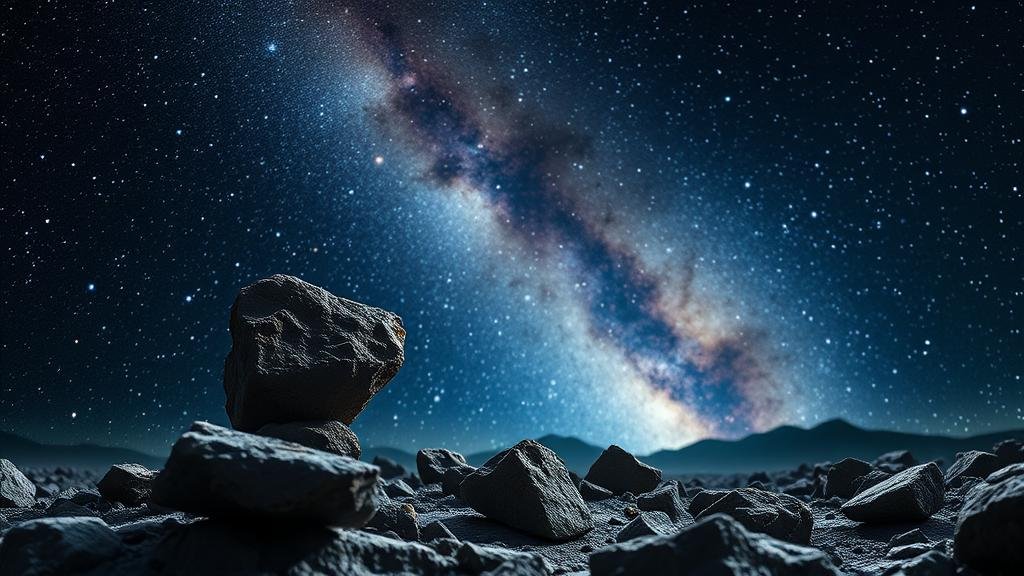Cosmic Treasure: Hunting for Tektites Formed by Ancient Meteorite Strikes
Cosmic Treasure: Hunting for Tektites Formed by Ancient Meteorite Strikes
Tektites are fascinating natural glass formations created from the Earth’s crust during significant meteorite impacts. For rockhounds and mineral collectors, the hunt for tektites represents not just a pursuit of beauty, but also a unique connection to cosmic events that shaped our planet. This article delves into the formation, significance, and collecting of tektites, providing practical tips and insights for enthusiasts.
What Are Tektites?
Tektites are small, glassy objects formed by the intense heat and pressure generated during a meteorite impact. Typically ranging from a few millimeters to several centimeters in size, tektites are primarily composed of silica and exhibit a range of colors, including black, green, and brown. Their unique shapes often resemble blobs or discs, and they can possess a striking transparency and clarity.
The Science Behind Tektite Formation
The formation of tektites occurs through a process known as impact melting. When a meteorite strikes the Earths surface, the energy released can exceed several million degrees Celsius. This extreme heat melts the local soil and rock, forming molten droplets that are propelled into the atmosphere. As these droplets cool and solidify, they fall back to Earth as tektites. The size and shape of tektites can vary significantly based on the impact velocity, composition, and environmental conditions at the time of the strike.
There are several well-known strewn fields around the world where tektites are commonly found. Some of the most notable include:
- The Australasian Strewn Field: This field spans parts of Southeast Asia and is the largest known tektite field, containing millions of tektites estimated to be formed from a massive impact event around 800,000 years ago.
- The North American Strewn Field: This field is known for its unique glassy materials and is tied to the known impact in southern Ontario, Canada.
- The Moldavite Fields: Located in the Czech Republic, Moldavites are a specific type of tektite, renowned for their olive-green color and intriguing flower-like patterns.
Why Collect Tektites?
Collecting tektites offers both aesthetic appeal and a tangible link to Earths history. The allure of holding a piece of cosmic history in your hands is strong, and many collectors find value in the scientific narrative encapsulated within each specimen. Tektites can range in price based on rarity, condition, and origin, with some high-quality pieces fetching hundreds or even thousands of dollars.
Tips for Hunting Tektites
For those eager to embark on a quest for tektites, the following practical tips can enhance the experience:
- Research Locations: Familiarize yourself with areas where tektites are known to occur. Visit strewn fields and consult geological surveys for specific sites rich in impact debris.
- Understand the Terrain: Tektites are often found in sandy or gravelly locations associated with riverbeds or ancient lake beds, where erosion may expose buried specimens.
- Use Proper Tools: Equip yourself with excavation tools, such as small shovels or trowels, as well as tools for cleaning and preserving your finds, like soft brushes and containers.
- Network with Local Collectors: Join rockhounding clubs and online forums to share experiences, tips, and potentially locate finding partners.
Real-World Applications of Tektites
Beyond the interest of collectors, tektites hold significant scientific value. Researchers study these objects to learn more about the conditions and consequences of ancient meteorite impacts. Tektites have been utilized in various fields, from geology and planetary science to materials science, shedding light on the Earth-Moon relationship and the effects of extraterrestrial impacts on terrestrial life. For example, studying the isotopic compositions of tektites can offer insights into the impactors characteristics, including its origin and trajectory.
Conclusion: The Cosmic Connection
Hunting for tektites is more than just a hobby; it is an exploration of Earth’s history and an appreciation of our cosmic heritage. Whether you are a seasoned mineral collector or a novice rockhound, the thrill of discovering these ancient glassy relics can ignite a passion that connects you with the universes vastness.
As you embark on your journey to find tektites, remember the collective wisdom of seasoned hunters and the importance of responsible collecting. With patience, research, and a little luck, you may unearth your own piece of cosmic treasure.



